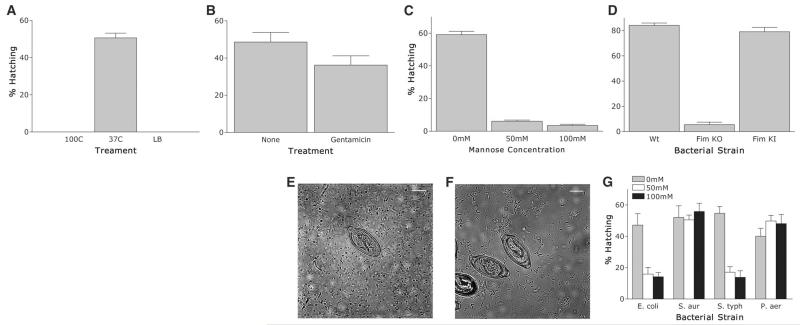Fig. 2.
T. muris eggs are induced to hatch in vitro after contact with type 1 fimbriae. (A) T. muris eggs were incubated for 2 hours at 37°C with E. coli preincubated for 10 min at 37° or 100°C. LB broth alone was used as a negative control. (B) T. muris eggs were incubated for 2 hours at 37°C with E. coli pretreated for 30 min with gentamicin (600 μg/ml) or untreated as a control. (C) T. muris eggs were incubated for 2 hours at 37°C with E. coli treated with 0, 50, or 100 mM mannose 30 min before and during hatching. (D) T. muris eggs were incubated for 2 hours at 37°C with wild-type E. coli (strain PK1162), FimKO E. coli, or FimKI E. coli. (E and F) T. muris eggs were incubated with FimKO (E) or FimKI (F) E. coli for 1 hour at 37°C. Scale bar, 10 μm. (G) T. muris eggs after 2 hours of incubation at 37°C with E. coli, S. aureus, S. typhimurium, or P. aeruginosa plus 0, 50, or 100 mM mannose before and during hatching. All figures show means ± SEM, *P < 0.001 using ANOVA.

